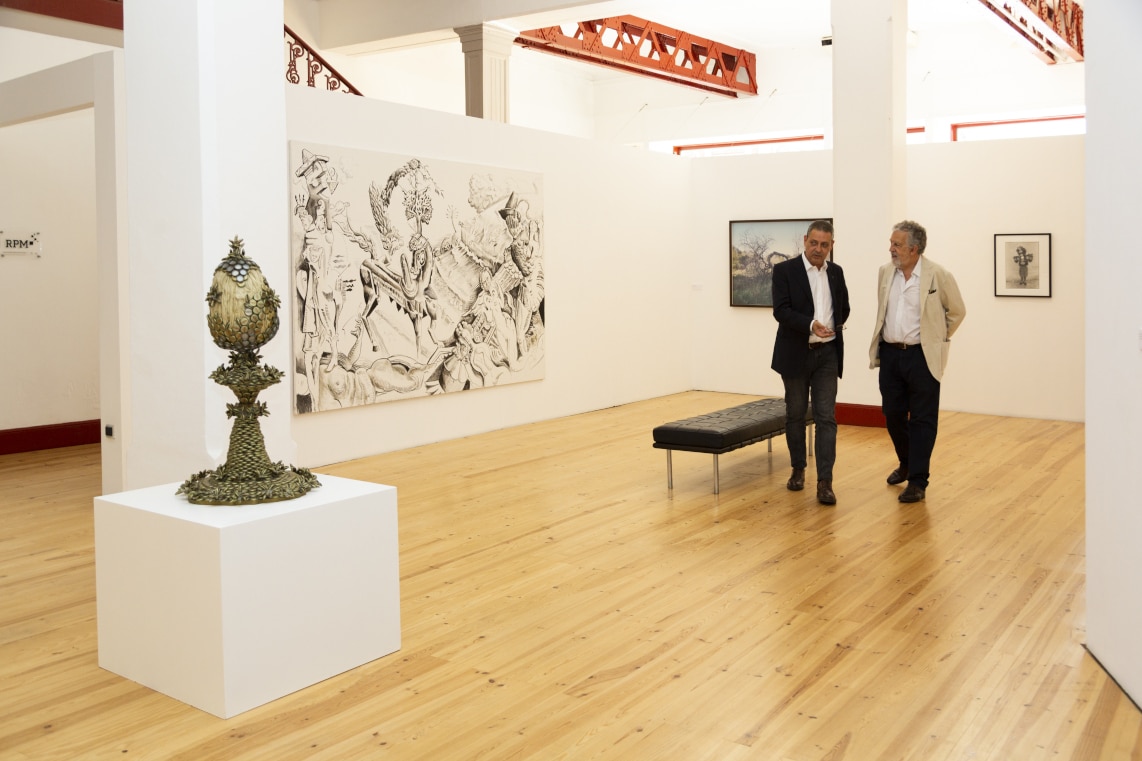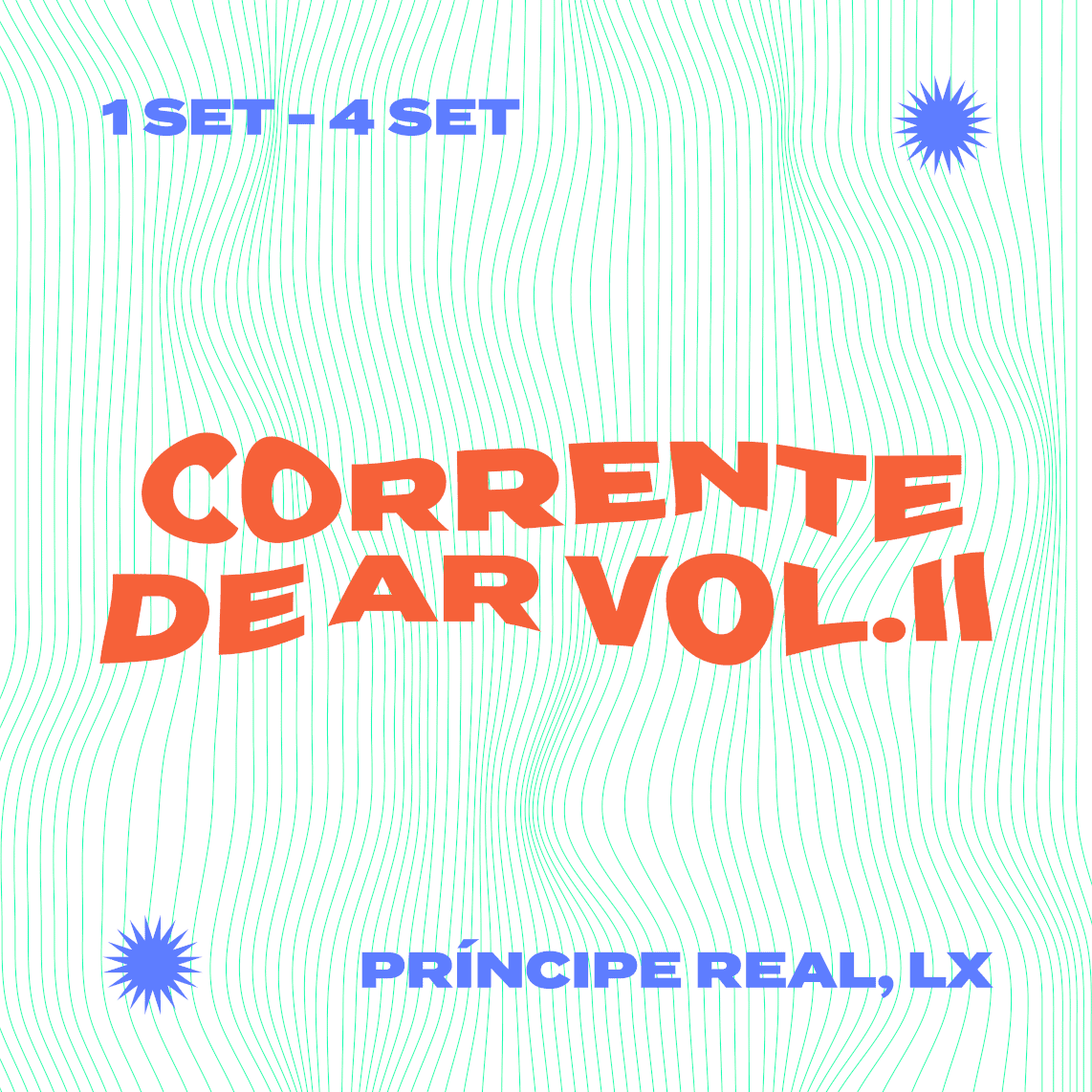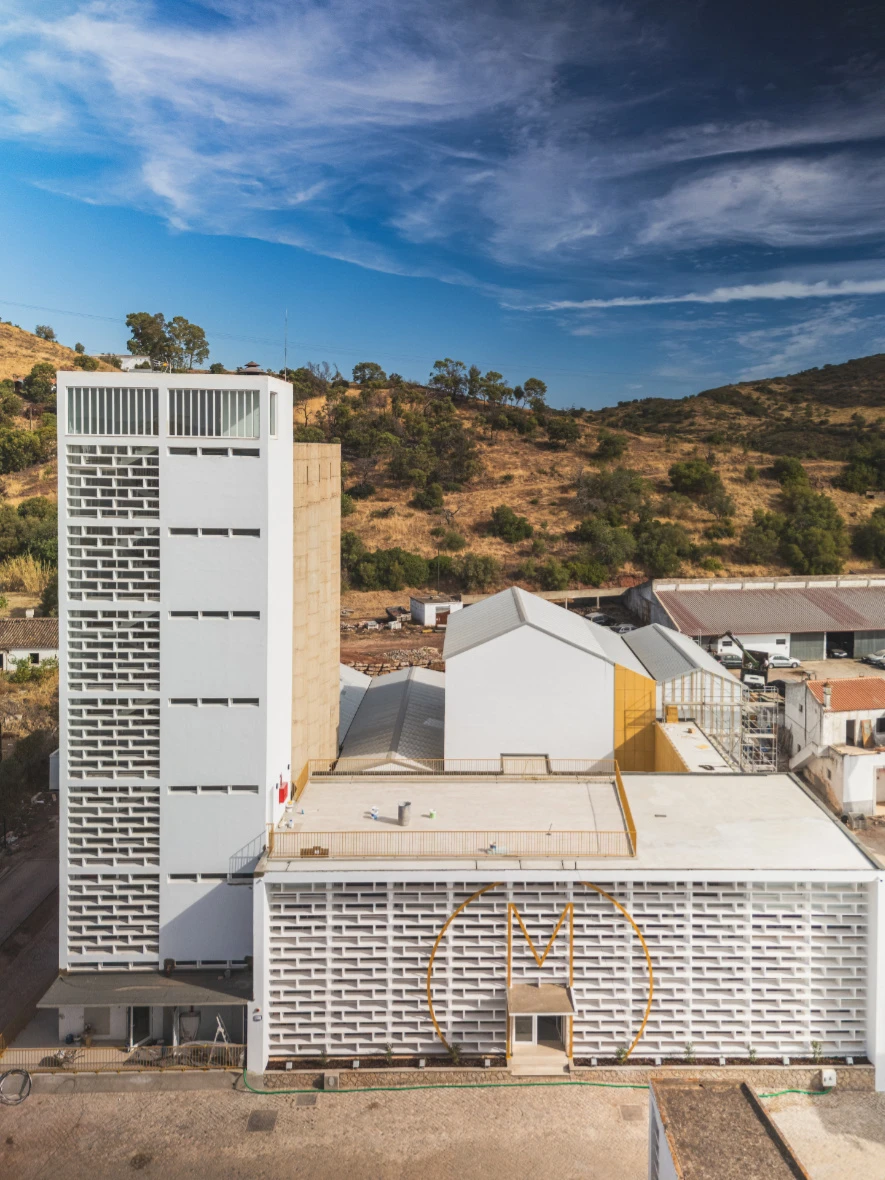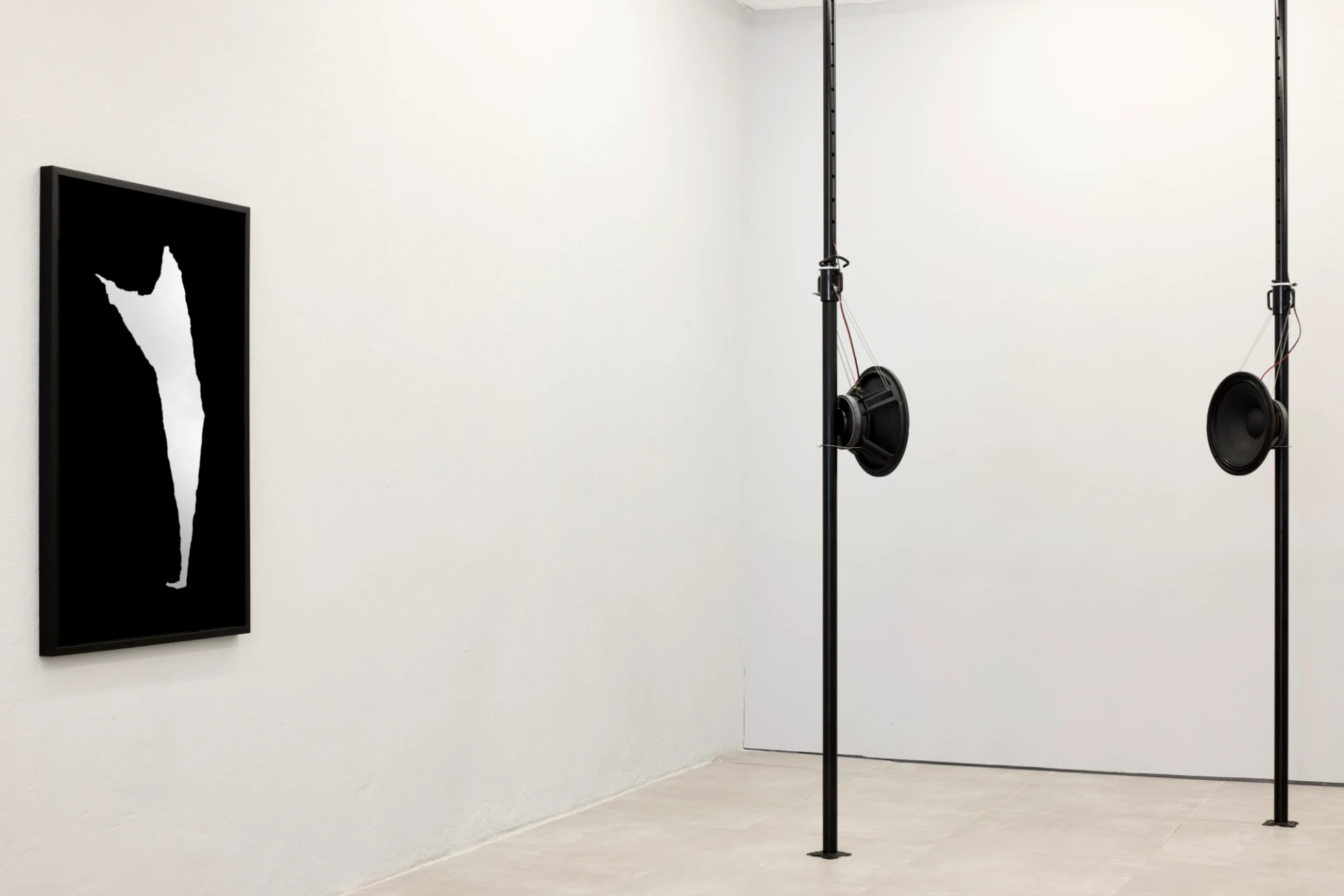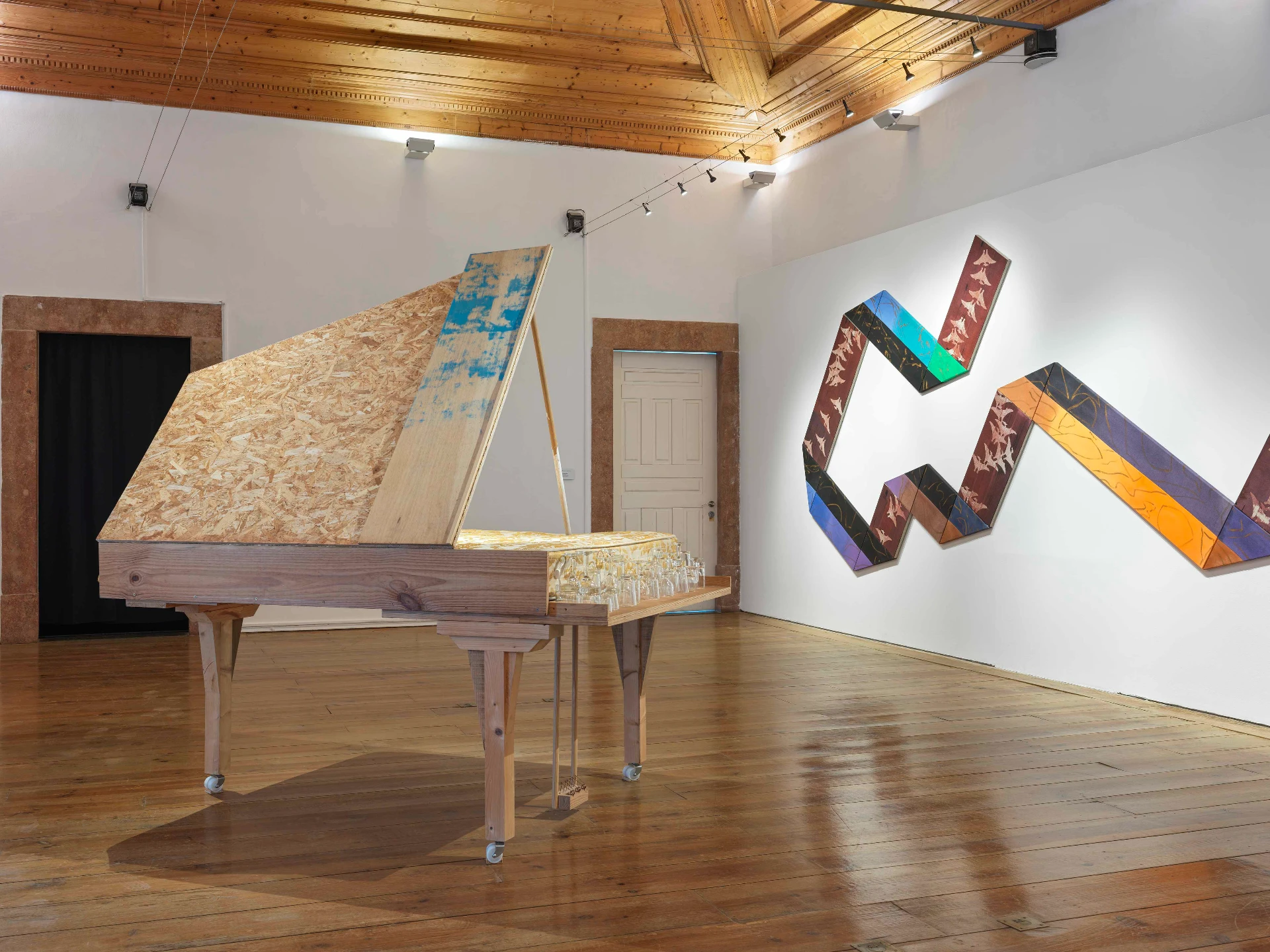In the 21st century, in Museu Rainha Dona Leonor, in Beja, we can see a replica of the window grille from which the nun Mariana Alcoforado would have felt the distance and the passion she experienced for a French knight, without ever being able to consummate it. Everything is uncertain: did this nun from Beja, living in a Franciscan convent, really write five love letters, translated into French and published in France in 1669; did the officer – the Marquis of Chamilly, who fought on the side of the Portuguese soldiers against the Spanish army between 1663 and 1668 – ever meet the nun? And, having met her, did he ignore her love on his return to France, prompting the passages written to him; whether the letters are really true or an exercise in style very common in the second half of the 17th century, appearing as supposed translations of epistles, whose originals are unknown… if, if…
Everything is uncertain, but plausible. Words exist and influence the world. Invented for the pleasure of readers or born out of the urgency of passion, their verbal source is feminine: it is a woman who says them. That fact survives, even if the authorship of the text may be a man. The key is invention – the construction of a story, an intrigue that enthrals readers and listeners. We celebrate invention so often: in Verona, one of the most visited places by tourists is “Juliet’s balcony”, an architectural structure reminiscent of the work of a Renaissance-era British playwright (whose biography also has mysterious gaps) who was never in the city. There are many examples – and it’s the materials, objects, symbols what gets people into the narrative.
At the end of a long corridor on the first floor of Museu de Beja, thick iron bars cover a south-facing window. For visitors, they serve as a staging of Mariana’s cell; they project the ideology of passion in the eventual opening of the window; they invite us to imagine, to go through other times, personalities, stories. That is the power of symbols, what objects become when removed from banality. Often, that attention becomes love: to honour that way of seeing the world, someone writes passionate words in letters; to remember the loving that exists in life, the imagination looks at the iron grid and sees two distant lovers: we invent other versions of ourselves, other strangers, other equals.
In this transformational dynamic through love is the art of Maria José Oliveira. (Num tempo sem tempo) a invenção dum outro / (Dans un temps sans temps) ‘l’invention d’un autre is the title of the artist’s exhibition. In collaboration with Carlos No, she replied to the invitation of the Luso-French Art Association: “to know if emotions, sensations and desires… are not necessarily ‘happily ever after’ encounters?” [1]. The hall of the Convento da Conceição (Museu Rainha Dona Leonor), in Beja, was one of the two places chosen for the exhibition, two installations – communicating with each other. And the other was the Collegiate Church of Bueil-en-Touraine, France. Both locations were real settings for the reconstitution of the love narrative in the film Les Lettres Portugaises (Bruno François-Boucher, 2013). This atmosphere was harnessed for the installation in the Baixo Alentejo capital.
The window of Mértola is at the end of a hall-room, on the museum’s first floor: seeming to enter a blood artery, the visitor sees, from the top of the stairs, the window bars, traversed by a kind of tulle. It is a suspended and transparent fabric. The place becomes almost a dream. Maria José Oliveira has created a physical cube, but ethereal, an obstacle and power of the presence of light to which the window is opened (“as a glow brings out a haze”, writes Joseph Conrad in Heart of Darkness). As we approach the back of the room, we hear the beating of a heart. It is a sound piece of the installation. The artist has named the cube in the centre of the exhibition Heart, the inhabited and latent muscle where the objects’ path ends. (In the first letter by the Portuguese nun, she says of her heart that it “beat so hard that it seemed to run away from me to come and look for you”[2] – this is the escape that the window points to, before the audible derangement of the heart).
This room-corridor-way-of-the-heart has pieces of different sizes, types and arrangements, displayed in ten showcases. And also, eight communicating drawings. They are pieces that connect a trivial, everyday trace. The exhibition setting cancels out the banality, makes them artistic objects or underlines their exceptionality. An example of the first operation is the long coat, suspended on a hanger, in the niche at the entrance’s right side: Maria José Oliveira told us how she created it. She had hoped to wear it at the opening of the exhibition, but preferred to make it part of it, when she noticed the casual nature of the event. Which is a valid justification. But the decision to integrate it in the show prompts a question and the rebuilding of communication links between the artist and the nun: Mariana’s surrender to the words of passion, “against all conveniences”, is like hanging the habit, emptying it of the person for having lost its meaning. The same ritualistic and dedicated labour with which the artist sewed the garment fits the spiritual dedication of a religious woman; to give up the garments is to cross the portal of an existence, of the convent cloister, towards passion (for Mariana, this is another form of confinement). It has gone from having less artistic relevance as a long coat to becoming the highlight of an exhibition (this implies enclosure in a niche in the wall).
An example of the second operation – the layout of the show underlines the previous exceptionality of an object – is one of the pieces in the second showcase, to the left of the visitor: a glass plate with image, a vitreous fragment that someone brought from Africa to offer to the artist (there are so many pieces in exhibitions that were offered by friends – “I use, as much as possible, the non-buyable”, says Maria José Oliveira), a piece of glass exposed to the sun for decades perhaps, and that the sunlight filled with images. Friendship engraved in this way is rare, the only now to be transposed and displayed.
Friendship – the silent peaceful declension of the verb to love in Portuguese – stimulates transformation into art: the “other” imagined may be someone other than the one who loves, a third party, which the love between “me” and “another” brings out. Or even “another” love, different from the one we know, in art and literature, through conventions. In one of the exhibition texts, the artist asks whether it will be possible, in the 21st century, to have “a new look at these love letters”. In the early 70s, the three Marias asked themselves, in Novas Cartas Portuguesas[3], about “the change in the lives of women over the centuries”. The curators write that the exhibition’s conception emerges as “a manifesto of feminine freedom, of women all over the world who are daily deprived of freedom of thought, of the right to dignified work, without social protection, also forced to severe limitations in their freedom of movement”, “victims – so many times – of cowardly domestic, physical and psychological violence”. Freedom can be exercised (and trained, to tone its innermost muscles) through a gesture that looks at the museum wall as an exhibited piece: along the corridor, and in front of two of the transparent cube’s edges concealing the heart, there are ten moments inscribed. The artist has increased the materiality of the symbolic enclosure, drawing outlines on the room’s walls in graphite, describing them as “communicating drawings”. They are equivalent to the pages of a book, where Mariana’s words, like those of all hindered women, silenced in their love due to the desertion of the loved one (a 17th century ghosting), are subtly registered.
Transforming, inventing, questioning are free and vital processes. They are vital because they hold and demand the life that love guarantees. They are free because the freedom to transform, to invent others, to interrogate the world allows us to fight for freedom. The freedom to choose to draw on the wall of the room, to take advantage of the marks on these walls made by previous presences. In affirming the love – love also for the mother’s glasses, a pair of gloves that are family heirlooms – that fights for love. In the whisper of a voice – Maria José Oliveira’s murmured one, if we can hear it – we perceive the strength of the cry.
The exhibition (Num tempo sem tempo) a invenção dum outro / (Dans un temps sans temps) ‘l’invention d’un autreby Maria José Oliveira, curated by Fernando Ribeiro and Jean-Michel Albert, is at Museu Rainha Dona Leonor, Beja, produced by the Luso-French Art Association, in a partnership between the Alentejo Regional Culture Directorate and Museu Rainha Dona Leonor, with the support of Camões – Institute for Cooperation and Language, it can be visited until September 18, 2022.
[1] Exhibition text, subscribed by the curators, Fernando Ribeiro e Jean-Michel Albert.
[2] Cartas Portuguesas, translation by Eugénio de Andrade, illustration of paintings by Ilda David. Lisbon: Assírio e Alvim, 1998, p. 17.
[3] Maria Isabel Barreno, Maria Teresa Horta e Maria Velho da Costa, Novas Cartas Portuguesas, 1972 (annotated edition, organised by Ana Luísa Amaral. Lisbon: Edições Dom Quixote).
